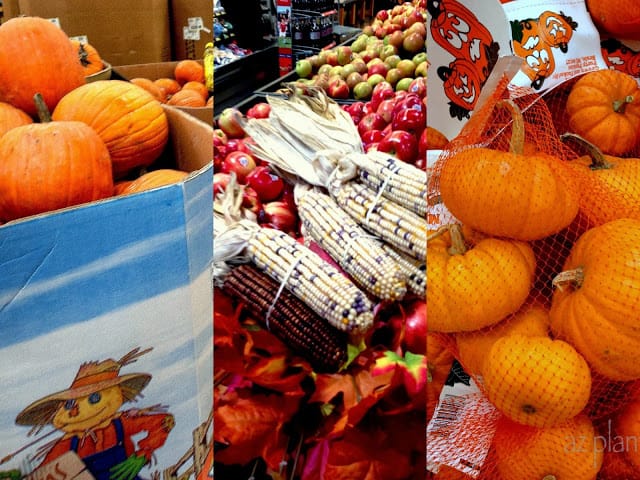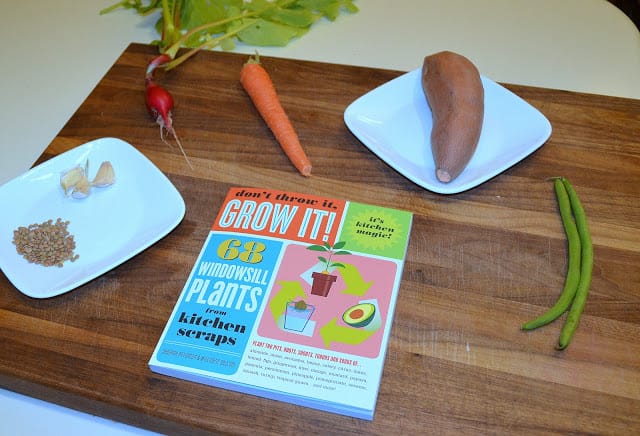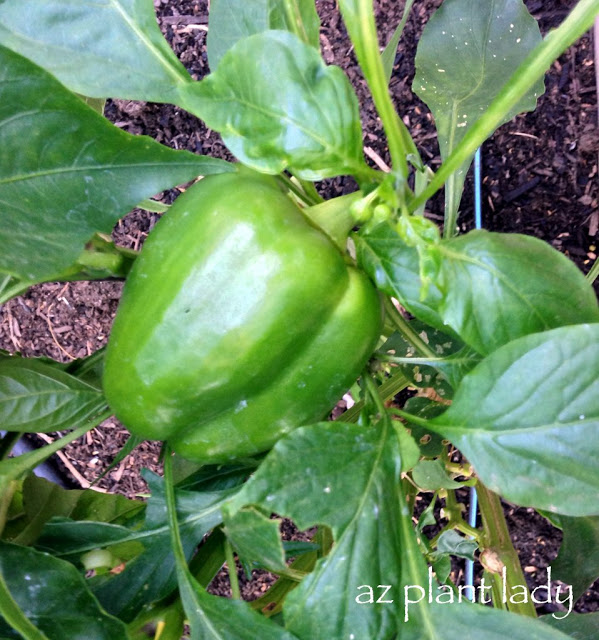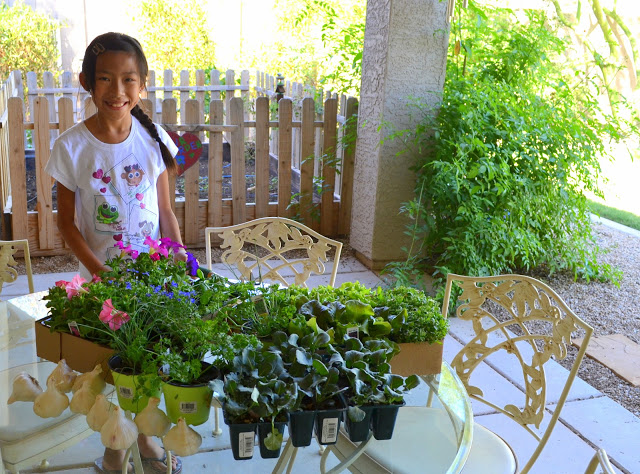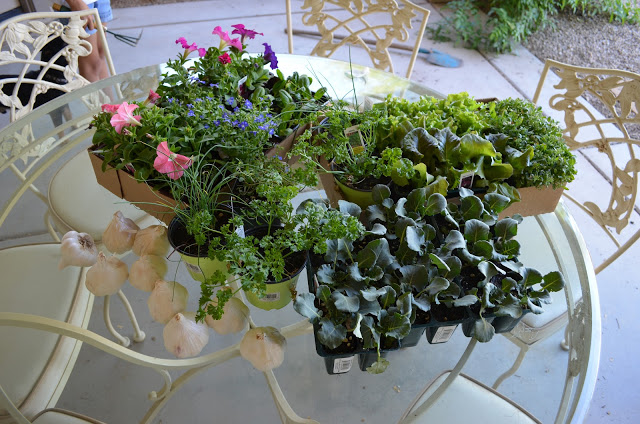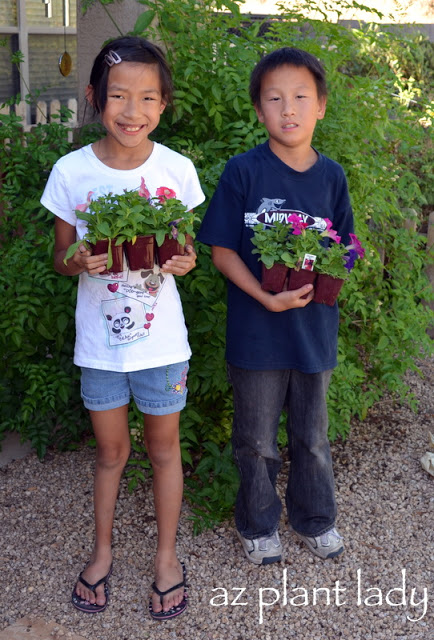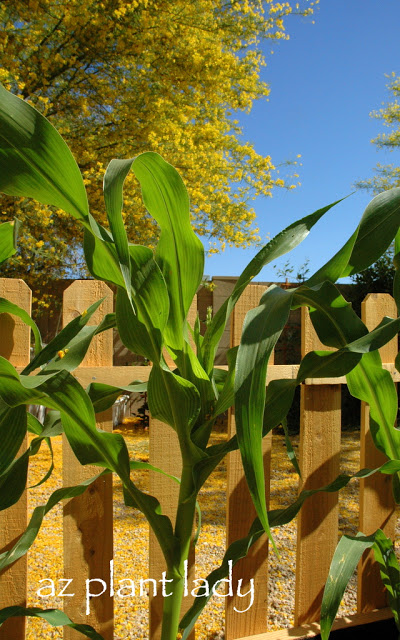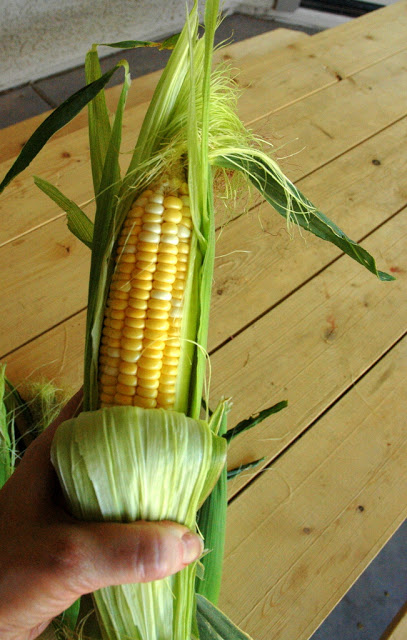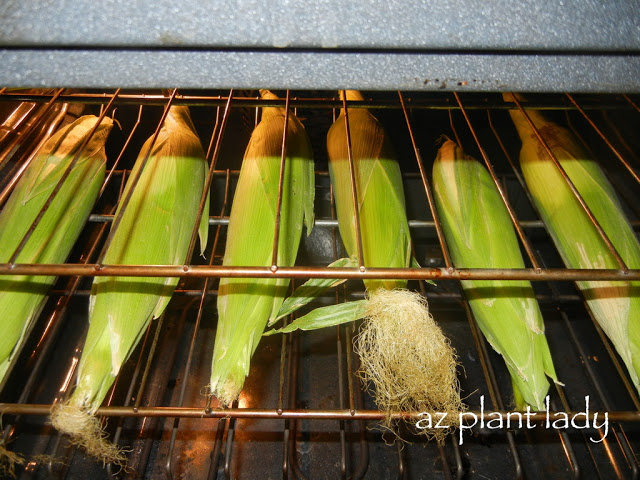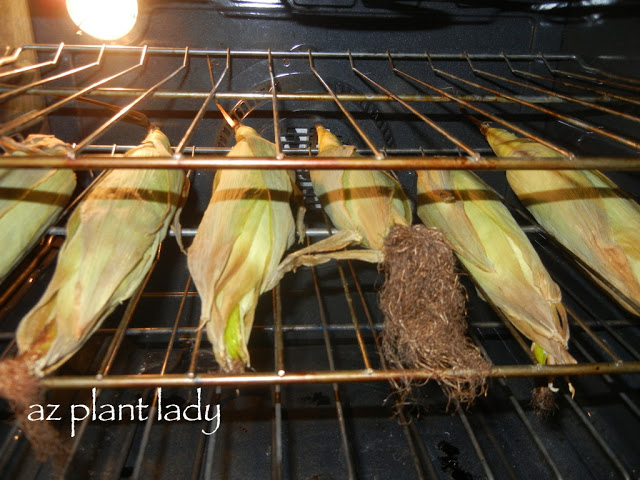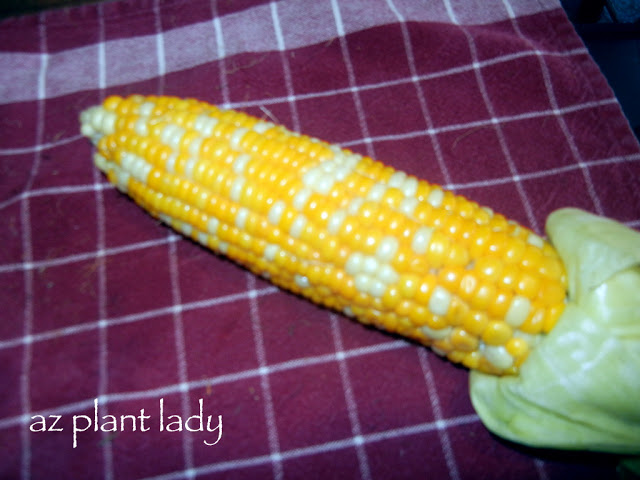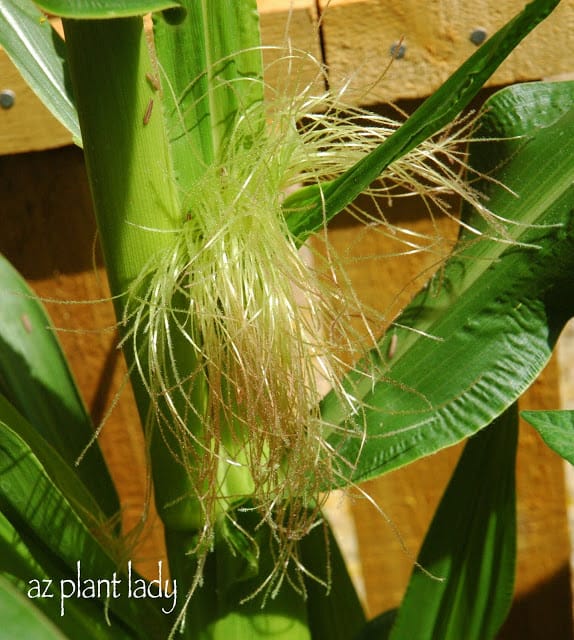Have you decorated your home for the fall holidays yet? I decided to do a little something different for this fall. Instead of spending a lot of money on fake pumpkins and other decorations that I would later need to find storage space for – I went a more ‘natural’ route with a little help from the produce aisle.
Of course, you can find the expected pumpkins and gourds. BUT, my goal was to find other types of fruits and vegetables to use as well.
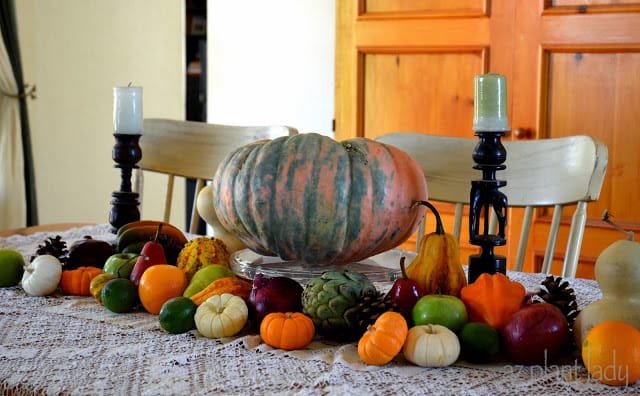
Here are the results of my shopping trip and the display I made. It is all natural and while there are a few gourds and pumpkins – there are also a few other produce items that are not often found in a fall centerpiece.
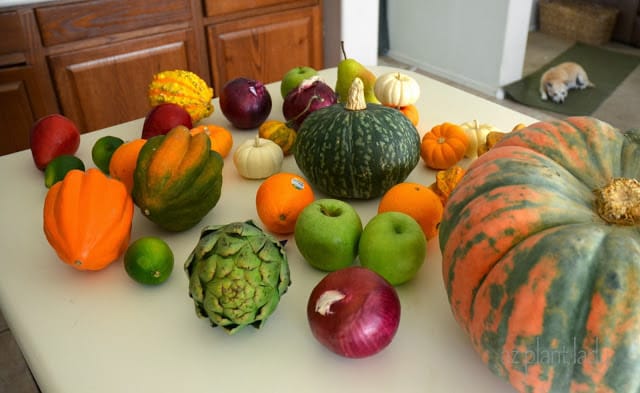
Here are some of what I came home with – acorn squash, artichokes, green apples, red onions, oranges, limes, a Kabocha squash, red pears and miniature pumpkins to go along with my large heirloom pumpkin.
Before creating my main centerpiece, I decided to see how many smaller arrangements I could make from my fruits and vegetables.
So, I pulled out a variety of serving dishes and vases and got started…
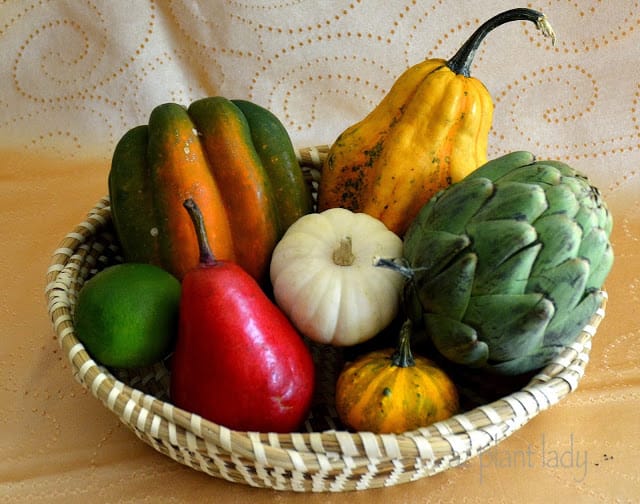
I placed a green/orange acorn squash, two gourds, an artichoke, a red pear, a white miniature pumpkin and a single lime in my sweet grass basket that I purchased in South Carolina, earlier this year.
I really like how all of these colors look like the changing leaves of fall (of which, we have very little in the desert 😉
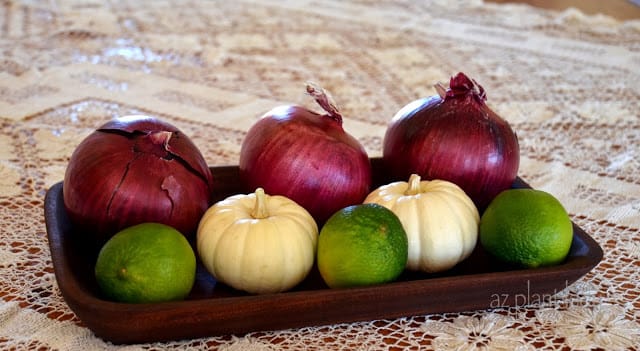
A combination of red onions, limes and miniature pumpkins look great in the wooden bread bowl that my husband made for me.
The tablecloth was my grandmother’s and has seen countless wedding receptions and dinner parties while she lived. She gave it to me before she died years ago and sadly, it doesn’t see a lot of action in my house.
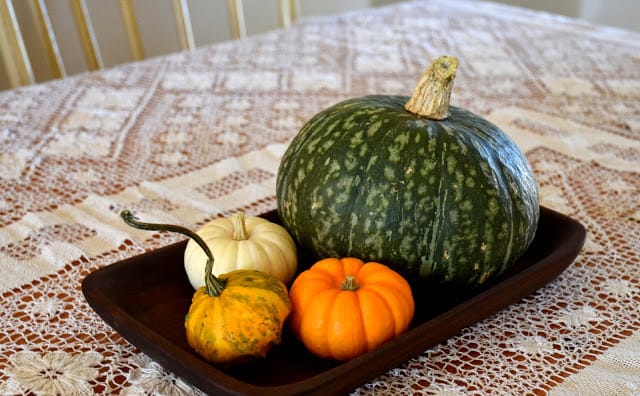
This may look like a smaller green pumpkin, but you would be wrong. It is actually a Kabocha squash that I found in the produce aisle of my local supermarket. I just love it’s small size and great color.
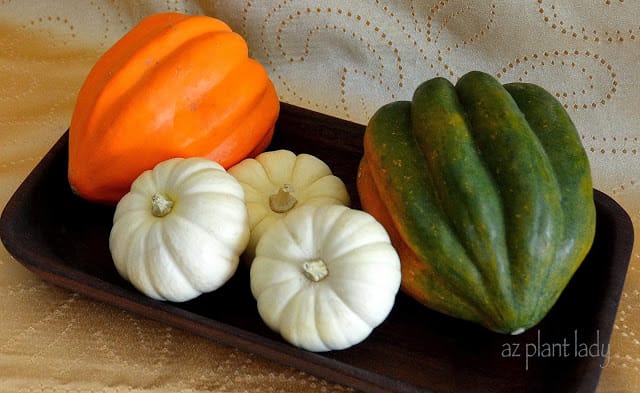
Did you know that pumpkins are considered a squash? It makes sense then, that other types of squash, like the acorn squash, above, would look great in fall displays.
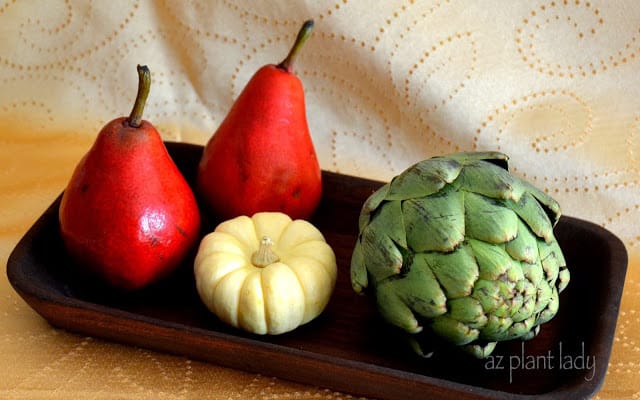
I think red pears are just beautiful, don’t you?
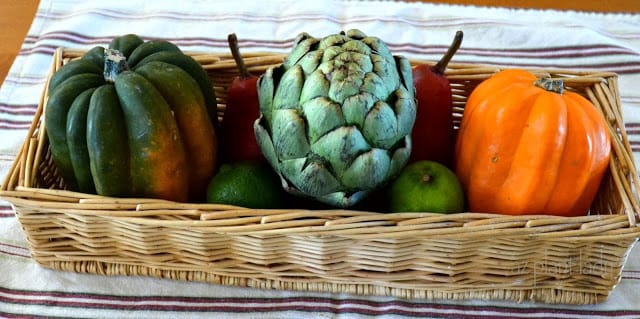
A long bread basket, houses two acorn squash, a artichoke and two limes and red pears.
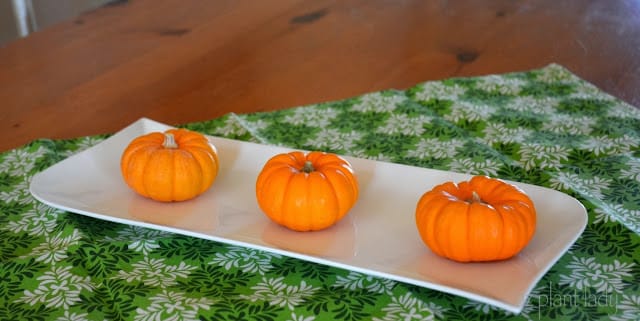
A fall display doesn’t have to be fancy. I love the simplicity of this long white serving plate with the miniature pumpkins. A green dish towel provides great color contrast.
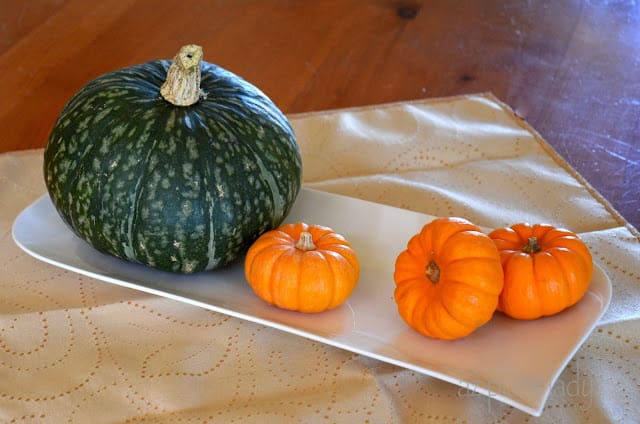
I like this arrangement too.
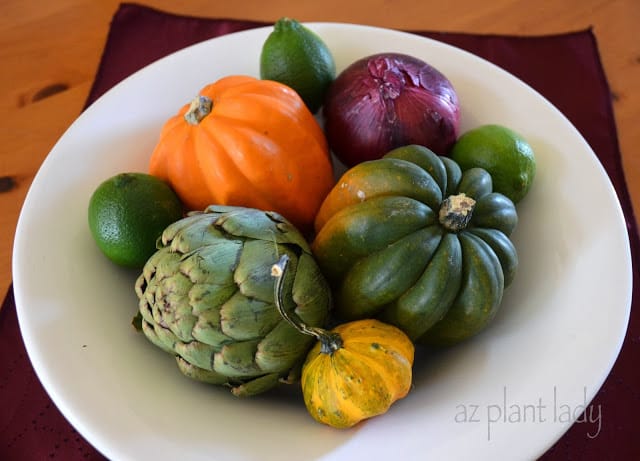
When my mother-in-law was preparing to move from her house to an apartment, she gave me this large white bowl as well as the long white serving plate. They make the colors of fruit and vegetables really ‘pop’, like the two acorn squash, red onion, artichoke, small gourd and limes, above.
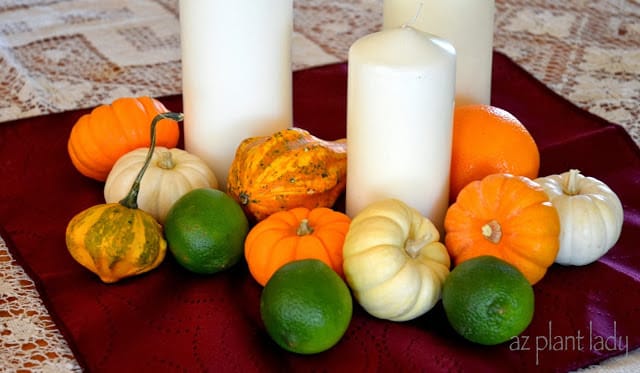
Gather together three pillar candles at differing heights and group fruits and vegetables underneath for a lovely centerpiece.
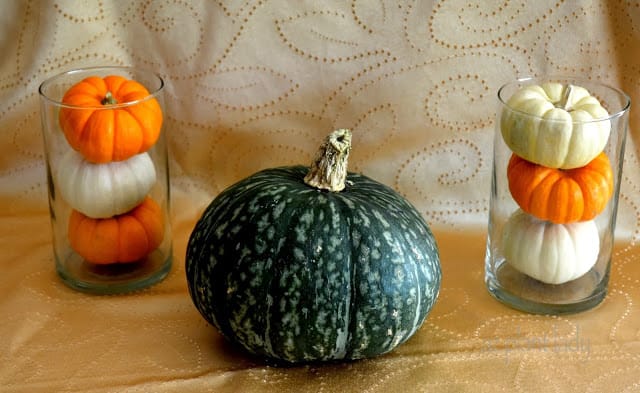
I used plain glass vases to put miniature pumpkins in.
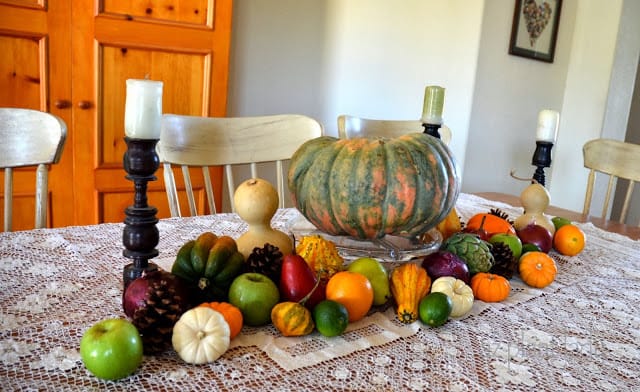
To create my main fall centerpiece, I grabbed some candles from the mantle over the fireplace to add to the display for a little height.
I placed my heirloom pumpkin onto a cake plate to raise it above the other fruits and vegetables.
I grabbed a few pinecones that I had picked up over the summer during out trip to the mountains.
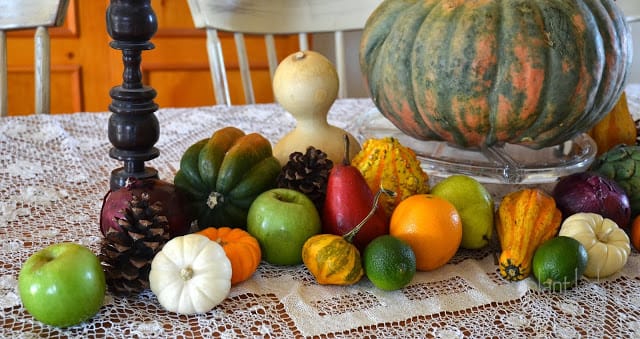
I also used a few dried gourds that I had grown in my garden a few years ago.
As you can see, there is no right or wrong way to arrange the produce. Just place things where you like them – I prefer larger fruits and vegetables toward the back and smaller ones in front.
Some of the produce will last longer then others. Switch out the apples, oranges, limes and pears every week.
In addition to creating a beautiful centerpiece, using produce for decorating is natural, you can eat much of it and you don’t have to find room to store it when the fall holidays are over – I can’t tell you how many boxes of Christmas decorations I have stored away, so it is nice to not have to worry about storing my fall decorations.
So what do you think?
Will you be inspired to create your own fall display the next time you push your cart through the produce aisle?
What fruit and/or vegetables would you like to use?


